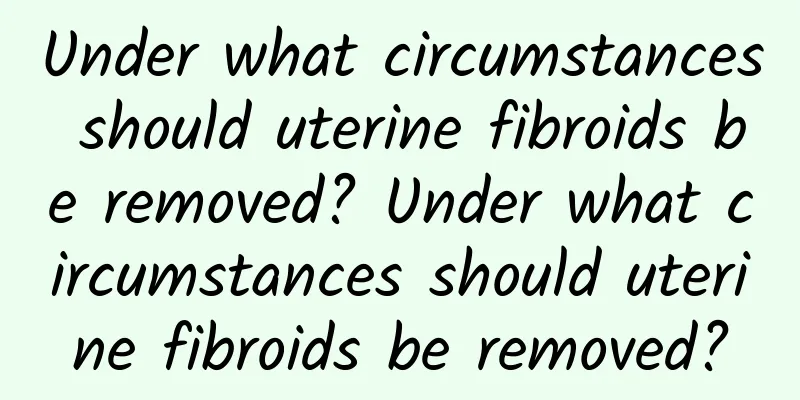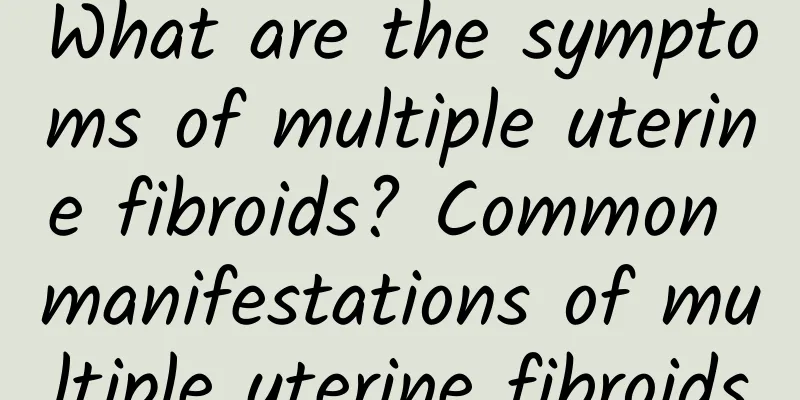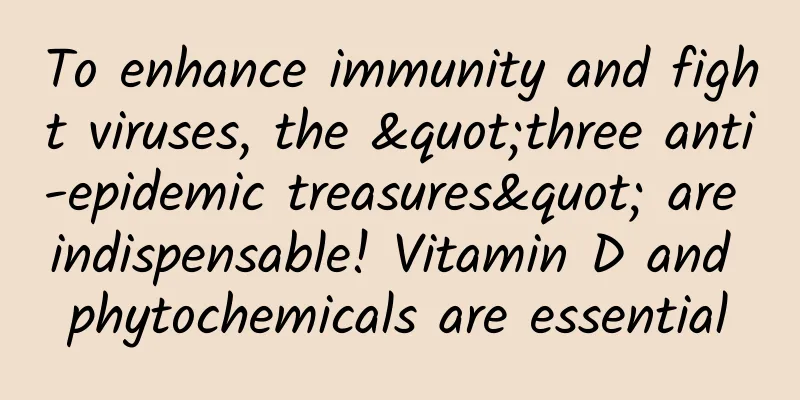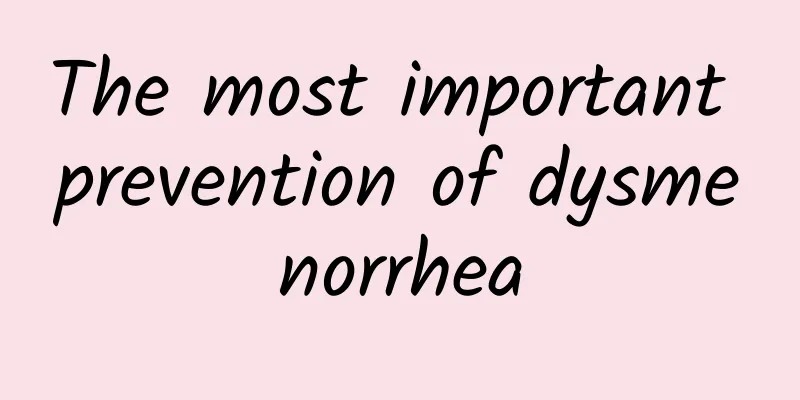Under what circumstances should uterine fibroids be removed? Under what circumstances should uterine fibroids be removed?

|
Under what circumstances should uterine fibroids be removed? Under what circumstances should uterine fibroids be removed? Uterine fibroids are very common gynecological diseases, and in most cases they can be controlled with conservative treatment. However, in some cases, fibroid removal or hysterectomy may be necessary to avoid complications. 1. Giant uterine fibroids Giant uterine fibroids usually refer to fibroids with a diameter of more than 5 cm. These fibroids may have a serious impact on the patient's quality of life, such as causing pelvic compression symptoms such as frequent urination and urgency. At the same time, giant uterine fibroids may also increase the patient's risk of bleeding and cause irreversible damage to uterine function. In this case, it may be necessary to remove the uterine fibroids or remove the uterus. 2. Continuous bleeding leads to anemia Uterine fibroids are often accompanied by bleeding symptoms, but in most cases the bleeding is not severe. However, some patients may suffer from persistent or severe uterine bleeding, leading to severe anemia. Anemia has a significant impact on the patient's physical health and quality of life. If conservative treatment cannot effectively relieve bleeding, then removing the uterine fibroids or removing the uterus may be the only treatment option. 3. Accompanied by other complications Uterine fibroids may be associated with other complications in some cases. For example, when uterine fibroids cause an increase in the thickness of the endometrium, it may lead to infertility or recurrent miscarriage. For women who have already given birth, if uterine fibroids are accompanied by significant pain, urinary retention, or benign pelvic tumors, hysterectomy may be a better option to avoid potential treatment difficulties and surgical risks. 4. Concerns about uterine cancer In some cases, the symptoms of uterine fibroids are very similar to those of uterine cancer, such as abnormal uterine bleeding, irregular menstruation, etc. If a suspected malignant lesion is found through imaging or biopsy, it is very necessary to remove the uterine fibroids or remove the uterus in time to rule out cancer and prevent further deterioration of the disease. Treatment options for uterine fibroids should be individualized to determine whether fibroid removal or hysterectomy is necessary. Large uterine fibroids, persistent bleeding leading to anemia, other complications, and suspicion of uterine cancer are all situations that may require surgical treatment. A detailed discussion with your doctor and individualized treatment options are important to ensure the best treatment outcome and patient safety. |
<<: What foods and fruits should not be eaten for uterine fibroids?
Recommend
How to care after surgery for chronic pelvic inflammatory disease
Many women suffer from pelvic inflammatory diseas...
What are the symptoms of Bartholinitis in women?
The Bartholin's glands are located below the ...
What causes fishy menstrual odor?
What causes fishy menstrual odor? The fishy smell...
What are the early symptoms of bacterial vaginosis?
Bacterial vaginosis is a common gynecological dis...
This trick prevents muscle loss and joint injuries! Muscle strength is not about size, first learn deceleration training to practice contraction force
If you want to live long, stay active and healthy...
Introduction to typical symptoms of atrophic vulvar leukoplakia at different stages
What are the symptoms of atrophic vulvar leukopla...
Causes of uterine effusion
Gynecological diseases are a common disease among...
Mouth hole won’t heal? Chicken soup 6 foods to boost immunity
careful! Frequent fatigue or mild mouth ulcers ar...
Fake! Tourist area "Little Bee" sells inferior fruits
Recently, "little bees" can be seen rid...
Different types of adnexitis will have different manifestations
Adnexitis is a common gynecological disease. In f...
Symptoms of cervical adhesion after painless abortion
If cervical adhesions occur after painless aborti...
It’s more effective to lose weight in autumn! Learn the Japanese and Korean black bean weight loss method
As the temperature turns cooler in autumn, it’s t...
Does drinking sugary drinks increase your mortality rate? !
Summer is approaching, and the high temperatures ...
Are scar-prone constitutions more likely to cause intrauterine adhesions? Will this affect fertility and health?
Intrauterine adhesion, also known as scarred uter...
What are the diagnostic criteria for adnexitis?
Generally speaking, the diagnosis of adnexitis is...









